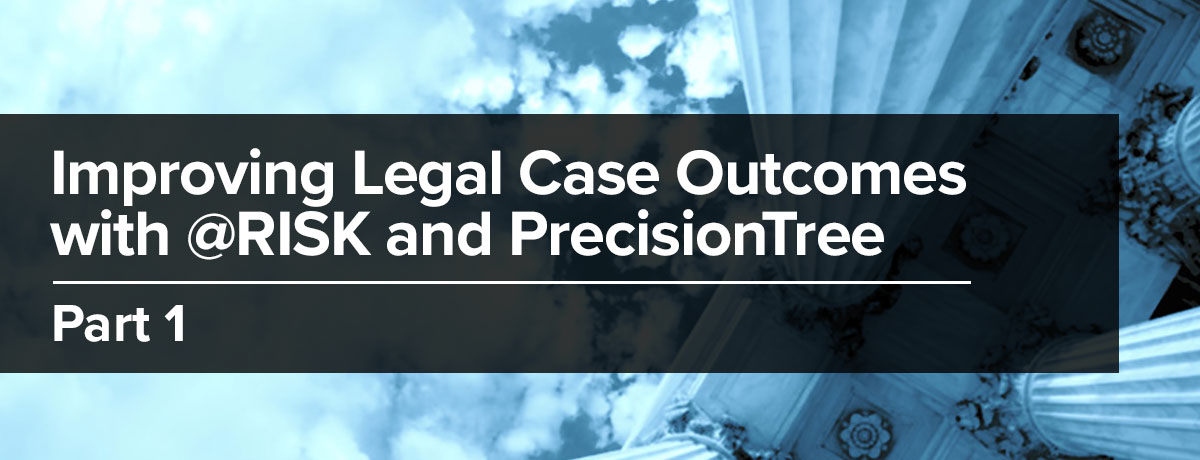
Quantitatively Optimize Your Negotiation Strategy with Decision Trees
In litigation, you often get stuck in inefficient negotiations. Between 95-97% of patent lawsuits settle before trial, but not before amassing an average of more than $2 million in expenses, according James C. Yoon, partner at Wilson Sonsini Goodrich & Rosati. If a long negotiation is disadvantageous for both parties, why does it take so long to reach settlement?
As stated in our previous legal blog series (download here), parties tend to settle when their expectations converge, but typically at least one group is overly optimistic about the potential of their case.
To set the stage for productive settlement discussion, it’s crucial to calculate the risks and rewards of a case, forecast case budget and identify key investigation areas. Palisade’s PrecisionTree software works within Microsoft Excel and is used by many firms to build quantitative, probabilistic decision trees that map out the many paths a litigation can take, calculating case outcomes at each point along the way.
Presenting an objective, realistic picture of all possible scenarios to both clients and opposing counsel helps to manage expectations early in the process. Commercial litigation specialists Ascendion Law recently adopted PrecisionTree to create detailed decision trees to understand the numerous probabilities at play in commercial legal disputes.
“We literally sent the tree to the other side, and they then saw exactly where we were coming from and our rationale for our decision. We were able to have a rational conversation—with PrecisionTree, you’re not just horse trading anymore in these negotiations,” said Chilwin Cheng, Ascendion Law’s Managing Partner.
Decision tree analysis helps determine the best course of action and all possible alternatives. By breaking down issues into manageable parts and assigning probability to outcomes, PrecisionTree presents quantitatively optimized results such as the cost of settling versus litigating.
In our next series post, we’ll dive into the inner workings of decision trees and discuss why patent litigation can be such a length, expensive process.
At Palisade, the makers of PrecisionTree, @RISK, and other leading risk and decision analysis solutions, we provide cost-effective, easy-to-use analytics to companies who want to make better decisions. To learn more about how we can help you speed up negotiations, determine fair market value of IP, or even solve a different challenge you might be facing, request a free trial of @RISK and PrecisionTree, included in the DecisionTools Suite.

